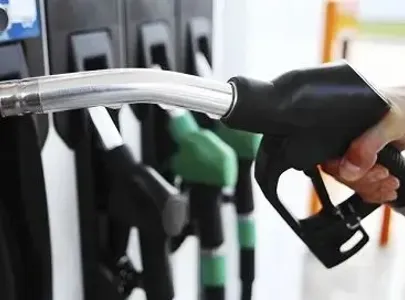
The key benefits
Diesel and petrol continue to be one of the biggest outlays for business, so it's critical for forward-thinking fleet operations to set accurate benchmarks on their weekly, monthly and annual fuel spending.
Understanding factors such as vehicle type, cargo weight and driving habits is essential for setting realistic benchmarks that will help optimise your fleet's fuel efficiency and bring significant cost savings to help the business thrive.
As well as being a major cost, fleet management represents a key part of a business's carbon footprint - and with customers increasingly conscious of their sustainability credentials, setting out and keeping track of fuel consumption markers is a sensible way to help reduce the fleet’s carbon emissions and minimise its environmental impact.
Why accurate measurement matters
Measuring fuel consumption accurately significantly affects your bottom line because clear data allows you to spot where it is being wasted and implement preventive maintenance measures. It might be bad route planning, aggressive driving or vehicles in need of maintenance.
Gaining accurate data insights helps you make better decisions on overall fleet efficiency, such as changing your regular routes in favour of better, more cost-effective ones or noticing that some drivers have poor driving habits that could lead to emissions reductions through enhanced training to improve their team's fuel efficiency and economy.
Understanding fuel consumption in fleet operations
To improve something, we need to understand it first. In fleet operations, your fleet’s consumption is not just the amount of fuel used. It shows how efficient your operations are, how well vehicles are performing, how effective driving habits are and how strictly maintenance schedules are being followed, all of which can lead to major cost savings.
Before setting realistic benchmarks, take a look at the historical data. By carefully looking at past fuel consumption records, you can learn important facts about how your fleet’s performance works in different situations.

How to get started
Begin by collecting data on usage, mileage, routes and driver behaviour over a reasonable time. This information will help you see patterns, seasonal changes, and any unusual events that might have impacted consumption at the time.
If historical trends data shows increased fuel consumption during certain months, it could be a sign of seasonal issues such as bad weather or heavy traffic. This insight can help you change your benchmarks as part of a review every few months.
Defining consumption
Remember that total fuel consumption is not the only sign of efficiency. The type of vehicle, engine size, load weight and driving conditions can all greatly affect usage. So a heavy-duty truck with a full load will use more than a smaller van that is not carrying anything for the same distance.
Measuring and understanding consumption data well helps you set realistic benchmarks and make smart choices to improve your fleet's performance.
Once you're aware of precisely where consumption is leaking profits from your operation – telematics and fleet management software are great start points for providing valuable data insights – you can begin building your armoury to stem the flow.
Fleet management software
Fleet management systems, some of which work with fuel card providers, are important for optimising petrol and diesel use through a central platform that watches and manages different parts of your fleet's operations.
These dashboard insights and emissions data provide detailed insights into consumption patterns and spotlight areas needing improvement. They can also automatically record transactions as well as alerting you to cases where limits are exceeded.
They often work in tandem with telematics systems that link vehicles to the fleet management system, providing constant updates on vehicle performance, allowing fleet managers to gain valuable insights into how their fleet is performing.
Enhancing the people side
While technology is important, your drivers are key figures when it comes to fuel management and driver safety. Simple changes in their driving habits can save a lot, and if they're trained in fuel-efficient driving, that will bring almost instant rewards.
Here are a couple of ways driver behaviour training, including comprehensive driver training, can play a crucial role:
- Reducing aggressive driving: Drivers learn to avoid rapid speeding, quick stops and sudden starts, all of which use more fuel.
- Optimising idling time: Training encourages drivers to cut down on idling while they stop or deliver, which can save fuel easily.
- Promoting route consistency: Drivers are taught to stick to the planned routes which helps in reducing extra mileage and improving fuel use.
How do you get your team onboard?
By creating a culture of accountability, fuel-aware driving and reward and recognition, these programmes help drivers take ownership in playing an active role in reducing outlay. Their engagement along with clear, regularly checked and updated benchmarks, accurate measurement, good monitoring strategies and the right technology will lower costs and make your fleet more sustainable.


